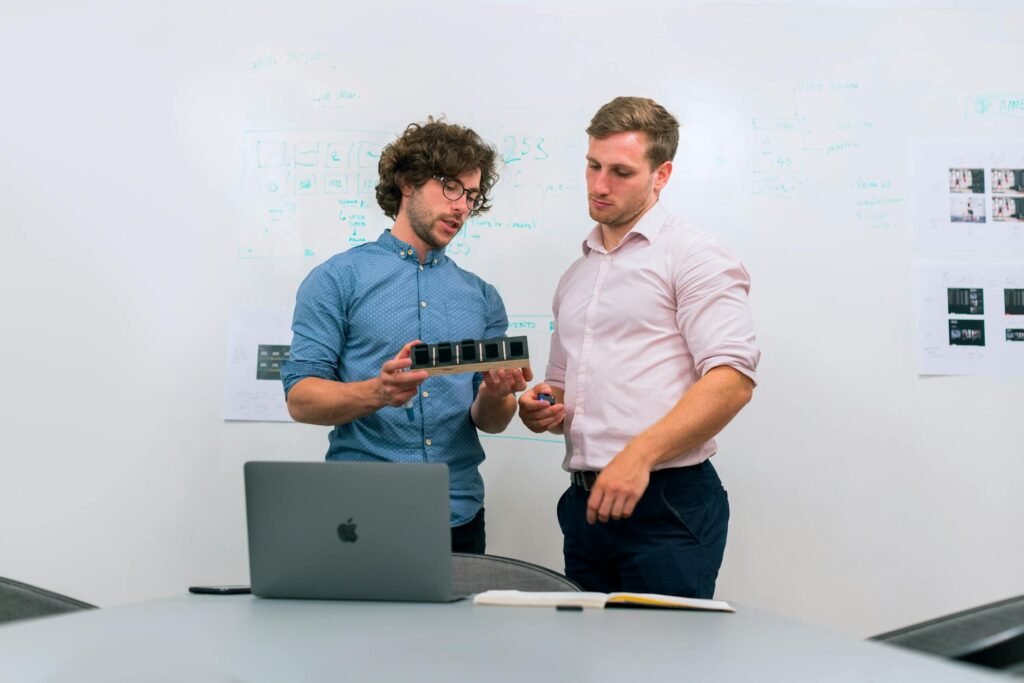Why AI Isn’t Your Advantage — Your People Are

he boardroom buzz is undeniable. « AI » is the word on every leader’s lips, heralded as the silver bullet for efficiency, innovation, and, most importantly, competitive advantage. Companies are pouring billions into sophisticated algorithms, machine learning models, and automation tools, all in the race to outsmart their rivals.
But what if this focus is fundamentally misplaced? What if the real advantage isn’t in the code, the data, or the latest generative model, but in the very thing that AI is designed to augment: your people?
The Inevitable Parity of Technology
Consider this: most cutting-edge AI technologies will eventually become commoditized. What is a breakthrough today will be a standard feature tomorrow. The same large language models, predictive analytics tools, and automation platforms that give you a momentary edge will soon be available to your competitors, often at a lower cost.
Think about the widespread adoption of cloud computing. Initially, it was a significant differentiator. Now, it’s a foundational utility. AI is on the same trajectory. As open-source models improve and platforms become more accessible, the technological gap will inevitably close. Relying solely on a technological advantage is a race to the bottom, where the only long-term winner is the provider of the technology itself.
The Irreplaceable Human Factor
AI is a powerful tool, but it is just that: a tool. It excels at processing vast amounts of data, identifying patterns, and executing repetitive tasks with incredible speed and accuracy. But it lacks the quintessentially human qualities that are the true source of sustainable advantage:
- Empathy and Emotional Intelligence: AI can analyze customer sentiment, but it can’t build a genuine relationship. It can predict what a customer might want, but it can’t understand their unstated frustrations or celebrate their successes with genuine empathy. This human connection is the bedrock of customer loyalty and trust.
- Creative Problem-Solving: While AI can generate novel ideas based on existing data, it cannot « think outside the box » in the way a human can. It lacks the ability to make connections between disparate fields, challenge foundational assumptions, or introduce a completely new perspective that defies the historical data it was trained on.
- Adaptability and Resilience: The world is messy and unpredictable. When faced with a crisis—a global pandemic, a supply chain disruption, or a sudden market shift—AI can analyze the data, but it is the human team that must pivot, innovate on the fly, and demonstrate the resilience to navigate the unknown. They can adapt business models, invent new processes, and inspire each other to push through adversity.
- Strategic Vision: AI can optimize a path, but it cannot define the destination. It can help you get from point A to point B more efficiently, but it is a human leader who must decide if point B is even the right place to go. Strategic vision, ethical judgment, and a sense of purpose are uniquely human attributes that guide an organization’s trajectory.
How to Build a People-Centric Advantage
Instead of seeing AI as a replacement for human talent, view it as an amplifier. The goal is not to have the most sophisticated AI, but to have the most capable, creative, and motivated people who are empowered to use that AI to its fullest potential.
Here’s how to shift your focus:
- Invest in Human Skills: Prioritize training in critical thinking, creativity, emotional intelligence, and collaborative problem-solving. Teach your team not just how to use AI, but how to ask the right questions, interpret the results with a critical eye, and apply the insights to real-world challenges.
- Foster a Culture of Psychological Safety: A team that feels safe to experiment, fail, and speak up is a team that will innovate. Encourage curiosity and reward learning, not just flawless execution. This is where truly groundbreaking ideas are born.
- Empower Human-in-the-Loop Processes: Design workflows that leverage AI for what it does best (data analysis, repetition) and empower your people to do what they do best (strategy, empathy, judgment). Use AI to free up your team’s time so they can focus on high-value, high-impact tasks.
- Prioritize Purpose Over Technology: People are motivated by a sense of purpose. AI can optimize processes, but it can’t provide meaning. Connect your team’s work to the company’s broader mission and show them how their unique contributions, amplified by technology, are making a real difference.
AI is an essential part of the modern business toolkit. It is a powerful engine for efficiency and a catalyst for new possibilities. But it is not a substitute for the human element. The companies that will thrive in the long term are not those with the most advanced algorithms, but those with the most engaged, skilled, and empowered people.
In the end, your competitive advantage won’t be found in a server room or a line of code. It will be found in the ingenuity of your engineers, the empathy of your customer service team, the vision of your leaders, and the collective spirit of a team united by a common purpose. Because when the technology becomes standard, your people will be the only truly unique asset you have left.






Youre so cool! I dont suppose Ive read anything like this before. So good to search out any individual with some original thoughts on this subject. realy thank you for beginning this up. this web site is something that is needed on the web, somebody with somewhat originality. useful job for bringing something new to the web!